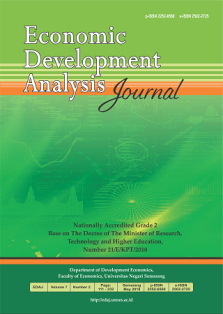Poverty Modeling in Indonesia: a Spatial Regression Analysis
Abstract
The government has made various efforts to reduce poverty in Indonesia. However, based on the World Population Review report, Indonesia is still ranked as the 73rd poorest country in the world in 2022 based on the value of gross national income. Therefore, it is necessary to identify the factors that affect poverty. This research was conducted by comparing classical, spatial lag, and spatial error regression, and the best model will be selected. The results show that the spatial error regression model is the best, based on the highest coefficient of determination and the lowest Akaike's information criterion value. Based on the best model, it is found that the expected years of schooling, the rate of gross regional domestic product, the percentage of households that have access to proper sanitation services, and the percentage of households with electric lighting sources have a significant effect on the percentage of poor people. The percentage of poor people in a province is also influenced by the percentage of poor people in the surrounding provinces. The results of this simulation can help the government take initiatives or policies aimed at reducing poverty in Indonesia based on variables that affect poverty.


